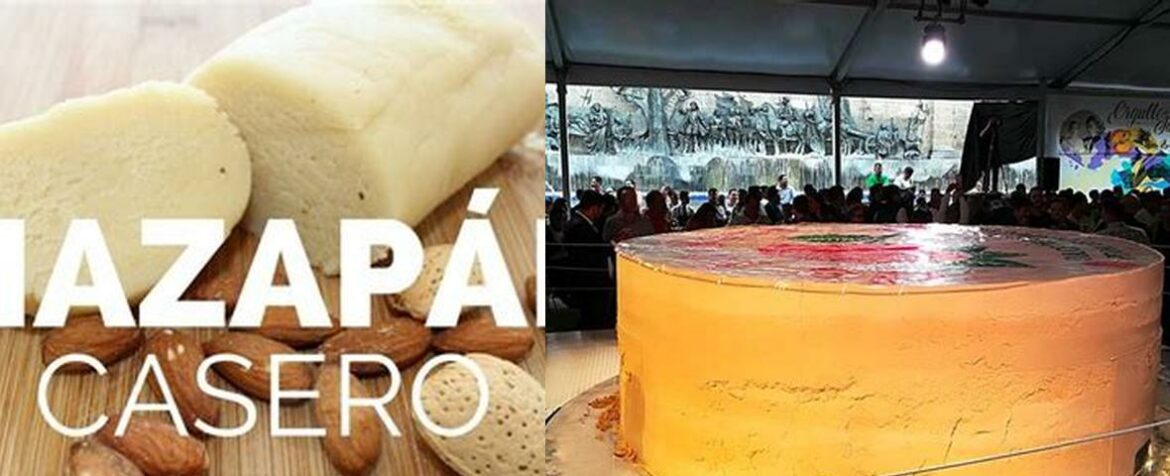Mazapan versus Marzipan: two sweet treats that have delighted taste buds for centuries. But what sets them apart? Are they really the same thing with different names? Prepare to have your confectionary curiosity satisfied as we delve into the delicious distinctions between Mazapan and Marzipan. Whether you’re a die-hard fan of one or simply have a sweet tooth, this blog post will unravel the mysteries and leave you craving for more. Get ready to explore the world of these delectable delicacies and discover why Mazapan and Marzipan are not just different in name, but in taste and tradition. So grab a cup of tea, sit back, and let’s dive into this sugary showdown!
Mazapan and Marzipan: Unveiling the Sweet Distinctions
In the realm of delectable treats, Mazapan and Marzipan stand as two distinct confections, each boasting unique characteristics that tantalize taste buds and intrigue culinary enthusiasts. While both share a foundation of almond-based ingredients, they embark on separate journeys, rooted in diverse cultural traditions and culinary landscapes, to deliver distinct sensory experiences. Delve into the world of Mazapan and Marzipan, unraveling their captivating differences and savoring their individual allure.
Mazapan: A Mexican Delicacy Steeped in Tradition
Hailing from the vibrant land of Mexico, Mazapan embodies the spirit of Latin American culinary heritage. This delectable confection traces its roots back to pre-Hispanic times, where it was fashioned from ground peanuts or almonds, embracing the bounty of native ingredients. The addition of sugar, honey, and vanilla extract weaves a symphony of flavors, creating a sweet symphony that dances on the palate.
Mazapan’s texture is a captivating interplay of crumbliness and smoothness, a textural duality that adds depth to its sensory appeal. Often adorned with colorful paper for a festive touch, Mazapan transcends its role as a mere dessert, becoming an integral part of Mexican traditions, gracing altars during Day of the Dead celebrations and bringing joy to festivals and special occasions.
Marzipan: A European Delight with a Storied Past
Across the vast expanse of the Mediterranean and into the heart of Europe, Marzipan emerges as a culinary treasure with an equally rich history. Its origins lie in the Middle East, where it was crafted from ground almonds, sugar, and a blend of aromatic ingredients. Marzipan’s journey through the ages has seen it embraced by European cultures, becoming a cherished ingredient in pastries, desserts, and confections.
In its textural manifestation, Marzipan distinguishes itself from Mazapan with its smooth and velvety embrace. Its pliable nature allows it to be molded into intricate shapes, transforming it into an edible work of art that adorns cakes, cookies, and other delectable creations. Marzipan’s versatility extends beyond its aesthetic appeal, as its almondy flavor lends a distinctive touch to a myriad of culinary delights.
A Tale of Two Delicacies: Unraveling the Differences
While Mazapan and Marzipan share a common thread of almond-based ingredients, their distinct characteristics set them apart as unique culinary experiences. These differences manifest in their ingredients, textures, flavors, cultural origins, and culinary applications.
Ingredients: A Culinary Divergence
Mazapan and Marzipan diverge in their ingredient profiles, reflecting their diverse cultural heritages. Mazapan’s Mexican roots infuse it with the zesty essence of lime zest and the warm embrace of cinnamon, while Marzipan’s European lineage introduces the delicate notes of rosewater or orange blossom water, adding a touch of floral elegance.
Texture: A Symphony of Contrasts
In the realm of texture, Mazapan and Marzipan embark on contrasting paths. Mazapan’s crumbly nature lends a delightful textural experience, while Marzipan’s smooth and pliable consistency allows it to be effortlessly shaped into intricate designs. These textural differences contribute to their distinct culinary applications, making them ideal for different roles in the world of desserts and confections.
Flavor: A Journey of Taste
Upon the taste buds, Mazapan and Marzipan paint distinct flavor landscapes. Mazapan’s buttery undertones, accented by the zesty tang of lime and the warmth of cinnamon, create a harmonious blend that captivates the senses. Marzipan, on the other hand, showcases a pronounced almondy flavor, its inherent sweetness enhanced by the subtle floral notes of rosewater or orange blossom water.
Cultural Origins: A Reflection of Heritage
Mazapan and Marzipan embody the culinary traditions of their respective cultures. Mazapan is deeply rooted in Latin American heritage, particularly in Mexico, where it holds a place of honor at festivals and special occasions. Marzipan, on the other hand, has woven itself into the fabric of European cuisine, gracing pastries, desserts, and confections across the continent, a testament to its enduring popularity.
Culinary Applications: A Culinary Exploration
FAQ about Mazapan Vs Marzipan
Q: How does Marzipan differ from Mazapan in terms of texture?
A: Marzipan has a smooth and velvety texture, while Mazapan has a unique interplay of crumbliness and smoothness.
Q: Can Marzipan be molded into intricate shapes?
A: Yes, Marzipan’s pliable nature allows it to be molded into intricate shapes, making it a popular choice for decorating cakes and cookies.
Q: What distinguishes Marzipan’s flavor?
A: Marzipan has an almondy flavor that adds a distinctive touch to a variety of culinary delights.
Q: How do Mazapan and Marzipan differ in terms of cultural traditions?
A: Mazapan is an integral part of Mexican traditions, often gracing altars during Day of the Dead celebrations and bringing joy to festivals and special occasions. Marzipan, on the other hand, is a European delight with a storied past.
Q: What are the unique characteristics of Mazapan and Marzipan?
A: Mazapan and Marzipan are distinct confections with unique characteristics that tantalize taste buds and intrigue culinary enthusiasts. They both share a foundation of almond-based ingredients but embark on separate journeys rooted in diverse cultural traditions and culinary landscapes.
Q: How does Marzipan’s versatility extend beyond its aesthetic appeal?
A: Marzipan’s versatility extends beyond its aesthetic appeal as it can be used to add flavor and decoration to a myriad of culinary creations.


